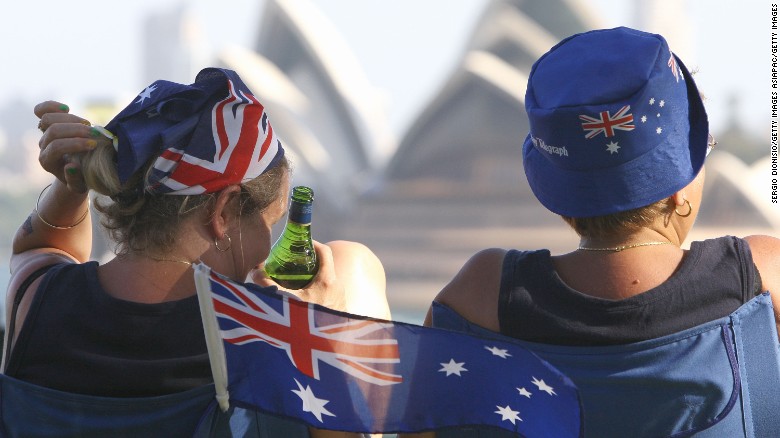
Australia is becoming older and more diverse — both culturally and religiously — according to new data from the country’s census.
While the first census in 1911 found the average Australian was a 24-year-old man, last year the typical Aussie was a married 38-year-old woman, who lives in a three-bedroom house, with two kids and two cars.
The census, which is conducted every five years, found that Asians now make up the largest percentage of the overseas-born population, jumping from in 2011 — 32.9% to 39.7% last year. Europe led that category the last time the survey was taken.
Fifty years ago, census data showed that more than 88% of the country was Christian. It’s now just over 52%. Since the last census in 2011, the country’s Muslim and Hindu populations each added more than 100,000 people, but they still only represent 2.6% and 1.9% of the population. There are still more Buddhists than Hindus.
Australia’s entire population grew by nearly two million from the 2011 census, reaching 23.4 million people in 2016.
“We’re multicultural in every part of society. We’ve known that forever and it just has become more patently obvious in this census,” said Gary Bouma, a professor emeritus of sociology at Australia’s Monash University. “Very few countries have three substantial religious communities other than a dominant group. We’re about the only one.”
That trend was reflected in language as well — the country gained more than 200,000 Mandarin speakers since the previous survey.
At home, 8.3% of Australians spoke Mandarin, making it the country’s second most common language, ahead of Cantonese, 3.5%, and Vietnamese, 3.1%.
No religion
In the survey, which had a 95% response rate, most Australians didn’t identify with a religion, a first for the country which had been predominantly Catholic.
Nearly 30% reported “no religion,” compared to 23% Catholic and 13% Anglican.
Despite the rise in the unaffiliated, who numbered 0.8% in 1966, Australia isn’t necessarily becoming a country of atheists, Bouma told CNN.
Some are likely practicing religion privately and in their own ways away from traditional, organized worship, he said.
“It isn’t anti-religious, it’s just very plural. And the groups themselves are highly internally diverse,” Bouma said. “It’s a real shock to anyone over 50.”
Global trends
In the coming years, Europe and North America are expected to see similar patterns when it comes to religion, according to a recent report from the Pew Forum on Religion.
But globally, the trend skews the opposite way.
The number of people religiously unaffiliated across the globe will rise on aggregate, but shrink as a percentage of global population, from 16% in 2015 to an expected 13% in 2060. That’s despite a boost in people expected to leave religions like Christianity in Europe and North America.
“While the unaffiliated are expected to continue to increase as a share the population in much of Europe and North America, people with no religion will decline as a share of the population in Asia, where 75% of the world’s religious ‘nones’ live,” the report said.
While the report does take into account religious switching — adults who either change their beliefs or become unaffiliated — those people will be outnumbered globally due to fertility and mortality rates.
“By 2055 to 2060, just 9% of all babies will be born to religiously unaffiliated women, while more than seven-in-ten will be born to either Muslims (36%) or Christians (35%),” a report from Pew found earlier this year.
As reported by CNN
